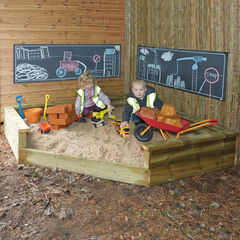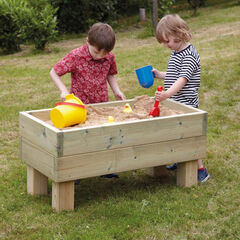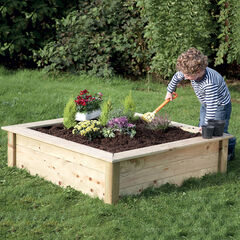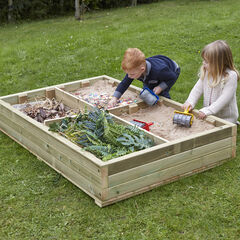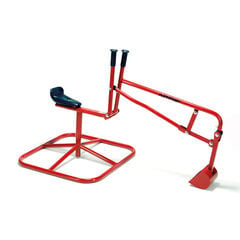In my work with OPAL I always encourage schools in the programme to install a sandpit, as there are few other resources that provide such lasting appeal for such a wide range of children. There seems to be no gender preference to sand play and in larger sand pits eleven-year-olds are just as likely to be found as four-year-olds. They are great places for children who struggle with cooperative and communication-based play, as children can play in proximity to and alongside with each other. Sandpits provide the opportunity for deep solitary engagement but also for encounter with others and the gradual development of joint enterprises.
If you want your sandpit to work well it is worth considering the following points gained from many observations:
- Go as big as you can. You want a beach not a box. The biggest sandpit in an OPAL school has 56 tons of sand and is .5m deep. This allows for use of the full body for digging, for group and single play and for multiple groups.
- Choose the right kind of sand. You don’t want sharp sand as it stains everything orange and is caustic. You don’t really want play sand. It has small round grains which are good for pouring but does not stick well for building or tunnels, it compacts more easily, and it must be imported, so it is not very green. You want just ordinary washed, dredged sand.
- If you are building into the landscape put mounds around it to keep the sand from wandering, line it to stop the earth underneath coming up and mixing, and if possible have gravel below the liner to help with drainage.
- Don’t put a waterproof tarp or cover over a sand pit. This will gather rain that then can’t be moved all winter. The tarp also cuts off air to the sand. This kills all the good microorganisms and allows stinky green algae to take over, making the sand unusable.
- Ensure the sand can breathe and stays in good condition, as well as keeping unwanted beasties off, by using nylon netting – fruit or fishing netting should do. Try to keep the children playing and digging it over all year to aerate it and stop it from compacting.
- A scattering of cheap plastic snakes acts as additional deterrent to cats.
- Provide a place to sit near the sandpit and some dustpan brushes so children can clean off their shoes and clothes and store them near the sandpit along with some spades and sand toys.
And don’t forget how to make sandpits more fun!
- How about adding a hand-operated digger for transforming sandpits into construction and excavation sites?
- Add interesting resources to sandpits such as metal detectors, encouraging children to explore, dig and discover. Try burying historical artefacts and coins. Hide Squidgy Sparkle numbers and letters asking children to find them and make a word.
- It is a good idea to try to protect the players in sandpits by providing plenty of enclosure. When you are building your road, castle or mermaid, you don’t want people charging through. Use existing walls or fences as part of the surround, giving additional protection using planting, mounding or trellising.
- Sand cannot really meet its full potential without water. Think about how this might be possible. If there is not a tap nearby then use a camping water barrel or let children transport water from elsewhere on the site. A giant kettle or water dispenser with a tap for children to help themselves to water is a great idea.
With thanks to Michael Follett BA Hons, PGCE, for writing this post. Michael is a former playworker, teacher and school improvement officer. He is currently director of OPAL and works with primary schools across the UK.
OPAL Outdoor Play and Learning CIC Ltd is a registered community interest company dedicated to improving the quality of play in primary schools and early years settings.














